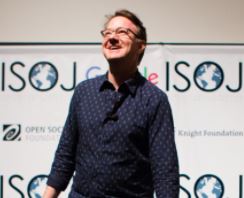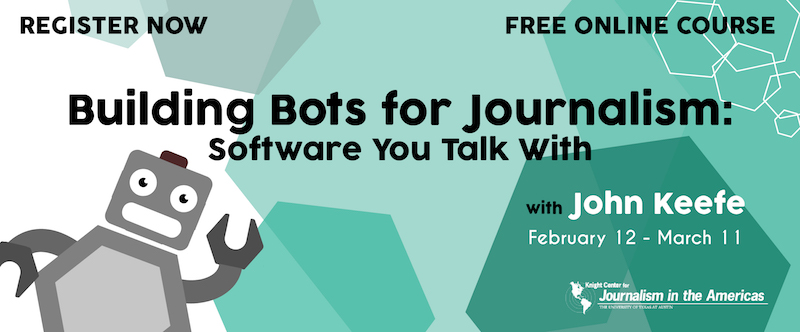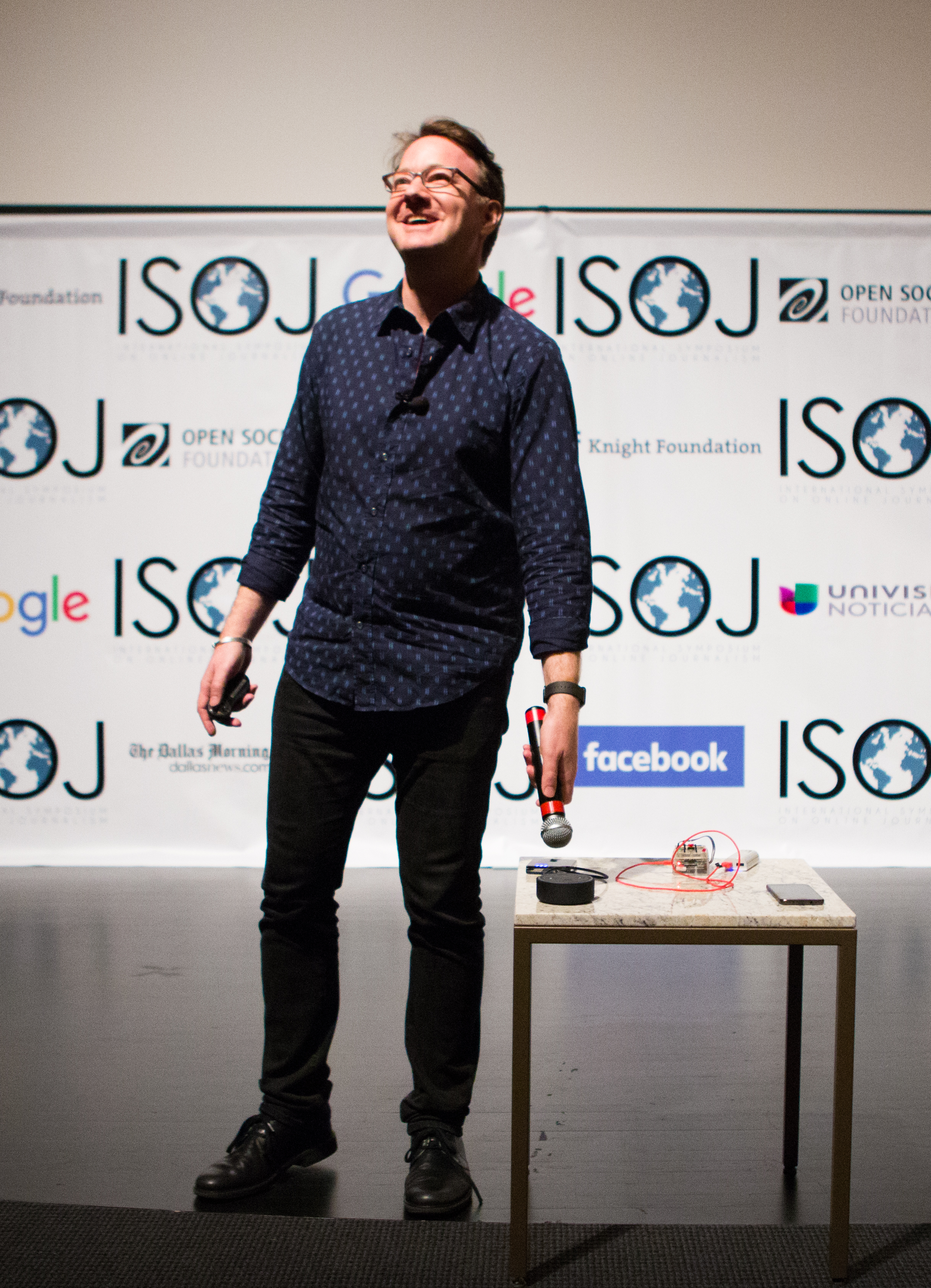
With so many distribution platforms for news, news companies are looking for ways to reach consumers in more personal and immediate ways. Enter the somewhat unexpected answer: the bot.
Bots have been a buzzword for journalists in recent years because of their abilities to reach readers on platforms consumers are already using on a daily basis: SMS text, Amazon Alexa, Google Home or Facebook Messenger.
In the next MOOC (Massive Open Online Course) from the Knight Center for Journalism in the Americas, John Keefe from news site Quartz — a pioneer and promoter of conversational journalism — will teach you the basics of writing a bot that will respond to readers like a human through text or speech.
“I’ll give you the mechanics for making your bot and setting up responses. The examples will be simple and you’ll get a flavor for how this works,” Keefe explained. “But where you can take it can be really big.”
Register now for “Building Bots for Journalism: Software You Talk With” and learn how to build a bot in our free, four-week online course. Just follow the registration instructions on the Knight Center’s distance learning platform, JournalismCourses.org, and you’ll be on your way to building a bot.

In the four-week course from February 12 to March 11, Keefe will teach you the basics of building conversational interfaces and how to deploy them on platforms like SMS, Amazon Alexa and Facebook Messenger.
Keefe will teach the four weekly modules using videos, presentations, readings, quizzes and discussion forums. The modules will provide an introduction to conversational interfaces, improving your bot’s conversational game or teaching it how to be more human-like, texting and talking to bots, and messenger bots.
Keefe is bot developer & product manager for the Quartz Bot Studio, a pioneer in the use of bots for journalism that was created with a $240,000 grant from the John S. and James L. Knight Foundation. Keefe is also an instructor at the CUNY Graduate School of Journalism, teaching about bots and rapid prototyping, and leads the tinkering company Really Good Smarts LLC. Formerly, Keefe worked as Senior Editor for Data News at public radio station WNYC in New York City. His passion for tinkering led him to write Family Projects for Smart Objects: Tabletop Projects That Respond to Your World, which grew from efforts to make something new every week for a year.
Keefe has extensive teaching experience, having led journalism classes and maker workshops at Columbia University, the New School University and CUNY. He was Innovator in Residence at West Virginia University’s Reed College of Media in 2015. You can follow his work at blog johnkeefe.net or watch his presentation on conversational journalism from the 2017 International Symposium on Online Journalism (ISOJ). He also spoke at the conference in 2014 about the use of sensors in journalism.
Anyone interested in building conversational interfaces is invited to take the course, but Keefe will focus on and take examples from the news and information industry.

“As newsrooms around the world face the challenge of creating bots and entering the wave of conversational journalism, we are delighted to offer this free online course taught by one of the pioneers and most important experts in this emerging area in the United States,” said professor Rosental Alves, founder and director of the Knight Center.
“We are proud to bring first-class, cutting edge, free or low-cost training to journalists around the world, as in this case. And we are grateful to the Knight Foundation for their support for our distance learning program,” Alves said.
Students of the “Building Bots for Journalism” MOOC will need a computer with an Internet browser and access to a mobile phone, but will also need to download free online services to help with the creation of bots. Most work will be done using bot-building system Dexter and human-like programming language RiveScript. Other services include Dialogflow (natural language processor), Twilio (for SMS texting), Airtable (online spreadsheet service) Amazon Developer Account (to build a voice with Amazon Alexa) and a Facebook account (to build a Facebook messenger bot).
Like all Knight Center MOOCs, this course will be asynchronous, meaning students can complete the lessons on their own time, when it’s most convenient. There will, however, be suggested deadlines to help you stay on task.
Students who successfully complete the course, including weekly quizzes and weekly participation in discussion forums, can earn a certificate of participation upon verification from Knight Center staff. The certificate, which is available in PDF format for U.S. $30, attests to participation in the online course, but no formal course credit of any kind is associated with the document.
Register now for “Building Bots for Journalism: Software You Talk With” and keep your newsroom up-to-date with the digital revolution taking place in the journalism world.
The Knight Center for Journalism in the Americas was created in 2002 by Professor Rosental Alves, Knight Chair in Journalism at the University of Texas Moody College of Communication, thanks to generous donations from the John S. and James L. Knight Foundation. The Knight Center’s distance learning program started in 2003 and is funded in part by the Knight Foundation. In the last five years, the Knight Center’s MOOCs have reached more than 120,000 people from more than 170 countries.